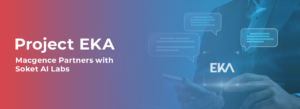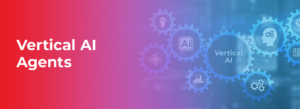- Why Quality Data Matters for AI Agents
- Understanding the Types of Data AI Agents Need
- Best Practices for Collecting Quality Data
- Strategies for Gathering Diverse and Inclusive Data
- The Role of Human-in-the-Loop for Data Collection
- Case Studies of Successful Data Collection for AI
- The Future of Data Collection for AI
- Frequently Asked Questions About Collecting Data for AI Agents
How to Collect Quality Data for AI Agents
Data is the lifeline of artificial intelligence. Without quality data, AI agents are nothing more than sophisticated algorithms waiting for fuel. But not all data is created equal—poorly collected, labeled, or incomplete datasets could derail even the most promising AI projects, leading to inaccurate predictions, low-performing models, and, in some cases, unintentional biases.
If you’re serious about building powerful AI agents that can make intelligent decisions and deliver meaningful results, the collection of quality data becomes paramount. This post will walk you through the key points of collecting data for AI agents, highlight custom data collection techniques, and help you strategize for diversity, accuracy, and inclusivity.
Why Quality Data Matters for AI Agents
The performance of AI systems depends exclusively on the data, the policies, and the business intelligence knowledge integrated within them. Data quality matters tremendously as it affects how AI systems operate. For example, optimal waitress AI software must have years of perfect data that would include a massive database of responses and a huge amount of accurate meaningful video footage, images, and audio. Otherwise, a service like AI that works as a virtual assistant will be inefficient, inconsistent and will have lots of biases.
To ground this importance in reality, consider the example of self-driving car algorithms. If these models are trained solely on urban driving scenarios, they will fail miserably in rural or snowy climates. Simply put, the quality—and diversity—of data dictates the success of any AI.
Understanding the Types of Data AI Agents Need
Before collecting data, it’s critical to identify the types of data your AI agent will need. The right kind of data depends on the specific problem your AI is solving. Here are the primary categories:
Structured Data
This type of data has a defined format and is stored in databases. Examples include:
- Customer demographic data
- Product inventories
- Financial transaction records
Structured data works well for machine learning tasks like classification or prediction where clear correlations need to be discovered.
Unstructured Data
Unstructured data lacks a predefined format and makes up nearly 80% of the data generated daily. Examples include:
- Text documents
- Video recordings
- Social media posts
AI models that process natural language or visual patterns thrive on unstructured data.
Synthetic Data
Sometimes, real-world data is insufficient or unavailable due to constraints. Synthetic data, artificially generated through simulations or generative AI, can act as a replacement. For instance, video game environments often simulate real-world physics to train autonomous robots.
Identifying the correct combination of data types allows you to tailor learning experiences for AI agents, ensuring they develop the skills needed in your niche.
Best Practices for Collecting Quality Data
Collecting high-quality data involves using intentional techniques that minimize errors and biases. Below are actionable best practices.
Data Collection Tools and Techniques
Tools play a pivotal role in streamlining the data collection process:

- Web Scraping: Tools like Beautiful Soup or Scrapy automate the gathering of publicly available data from websites.
- Sensor Data: Advanced IoT sensors capture environment-specific data, such as temperature, traffic flow, or motion for physical systems.
- Manual Surveys: Custom questionnaires distributed online can gather subjective feedback directly from users.
- APIs: Organizations like social media platforms and weather services offer APIs to access real-time datasets.
Macgence, for example, specializes in generating custom datasets using cutting-edge sensors and APIs designed to train high-quality AI/ML models.
Data Cleaning and Preprocessing
Raw data is rarely perfect. Therefore, preprocessing steps are essential:
- Remove duplicate entries or corrupt files.
- Handle missing values intelligently—depending on the domain, this could involve estimation or skipping.
- Normalize the data so it maintains consistency across the dataset.
Quality cleaning ensures AI agents work only with the most relevant information.
Ensuring Data Privacy and Security
Collecting data responsibly involves strict adherence to privacy standards like GDPR (General Data Protection Regulation). Before initiating data collection:
- Obtain user consent for personally identifiable information.
- Encrypt sensitive data during collection and transport.
- Limit storage access to authorized personnel.
By respecting user privacy, you not only comply with the law but also establish trust with your audience.
Strategies for Gathering Diverse and Inclusive Data
Diversity in data collection is key to avoiding biases and ensuring fairness when training AI. Tips for achieving inclusivity:
- Geographic Representation: Aim for worldwide data that includes diverse cultural, economic, and geographic contexts.
- Language Diversity: For NLP, collect data from multiple languages to ensure your AI can communicate universally.
- Edge Cases: Gather data outside the norm, such as rare diseases or extreme weather conditions, for specialized applications.
For instance, Macgence has successfully used inclusive data strategies to train multi-lingual AI applications.
The Role of Human-in-the-Loop for Data Collection
AI can automate many tasks, but humans remain indispensable for ensuring data quality by:
- Reviewing automated labels for errors.
- Providing subject-matter expertise when unique contexts appear.
- Personally inspecting datasets for anomalies or gaps.
Human-in-the-loop strategies act as a safety net, bringing a critical layer of reliability to AI development.
Case Studies of Successful Data Collection for AI
Macgence and Customer Support AI
Macgence worked with a leading e-commerce platform to create a smart chatbot by developing a custom dataset of user queries. By curating diverse inquiry language formats, their bot achieved a 95% query resolution rate.
Autonomous Vehicle Manufacturer
A robotic car company needed data for both rural and urban settings. By combining video camera feeds, satellite imagery, and synthetic datasets, the AI reached groundbreaking performance on difficult terrains.
These examples highlight how a focused approach to data collection can lead to success.
The Future of Data Collection for AI
The future of AI hinges on the continuous improvement of data collection techniques. Innovations like federated learning and synthetic data generation are redefining scalability and security for enterprises.
At Macgence, we’re committed to empowering companies with the data they need to create intelligent, game-changing AI solutions. Whether you’re just starting or refining existing systems, your data collection strategy is the foundation of AI success.
Interested in learning more? Discover how Macgence can help you collect high-quality, custom datasets to train your AI/ML models effectively.
Frequently Asked Questions About Collecting Data for AI Agents
Ans: – Custom data collection ensures your AI is trained on contextually relevant examples tailored to your domain, avoiding the limitations of generic data.
Ans: – Focus on diversity and inclusivity across geography, language, and demographics. Regularly audit datasets for unbalanced or discriminatory patterns.
Ans: – Web scraping tools (like Scrapy), APIs, survey tools, and IoT sensors are all excellent options depending on your data needs.
You Might Like
February 28, 2025
Project EKA – Driving the Future of AI in India
Artificial Intelligence (AI) has long been heralded as the driving force behind global technological revolutions. But what happens when AI isn’t tailored to the needs of its diverse users? Project EKA is answering that question in India. This groundbreaking initiative aims to redefine the AI landscape, bridging the gap between India’s cultural, linguistic, and socio-economic […]
March 7, 2025
What is Data Annotation? And How Can It Help Build Better AI?
Introduction In the world of digitalised artificial intelligence (AI) and machine learning (ML), data is the core base of innovation. However, raw data alone is not sufficient to train accurate AI models. That’s why data annotation comes forward to resolve this. It is a fundamental process that helps machines to understand and interpret real-world data. […]
March 6, 2025
Vertical AI Agents: Redefining Business Efficiency and Innovation
The pace of industry activity is being altered by the evolution of AI technology. Its most recent advancement represents yet another level in Vertical AI systems. This is a cross discipline form of AI strategy that aims to improve automation in decision making and task optimization by heuristically solving all encompassing problems within a domain. […]
March 5, 2025
Use of Insurance Data Annotation Services for AI/ML Models
The integration of artificial intelligence (AI) and machine learning (ML) is rapidly transforming the insurance industry. In order to build reliable AI/ML models, however, thorough data annotation is necessary. Insurance data annotation is a key step in enabling automated systems to read complex insurance documents, identify fraud, and optimize claim processing. If you are an […]





